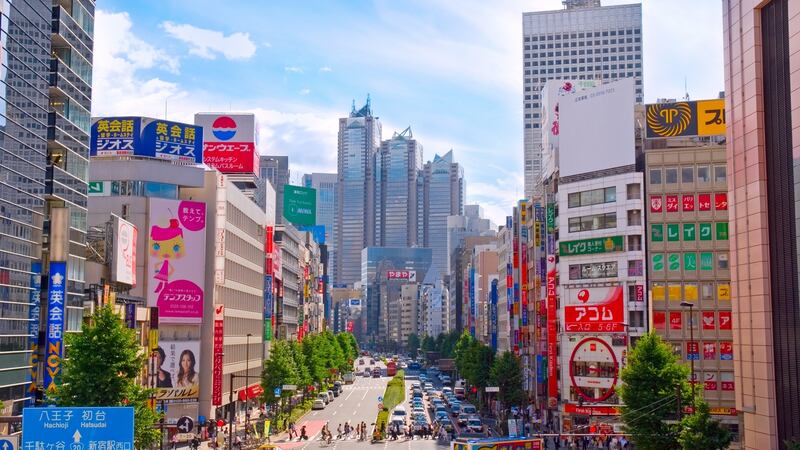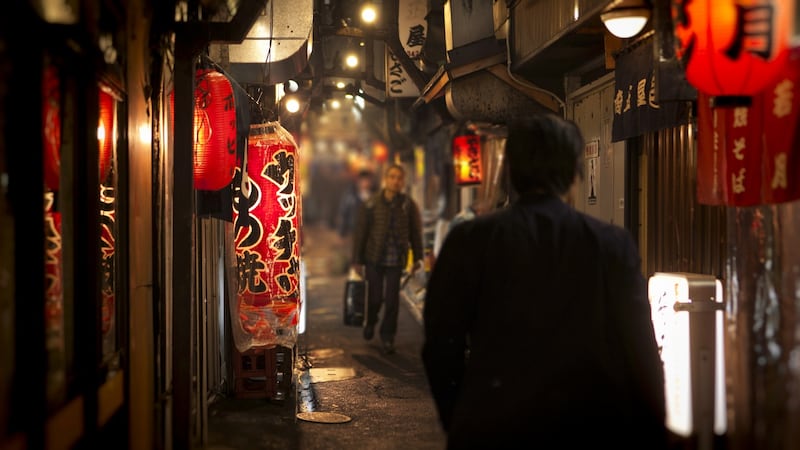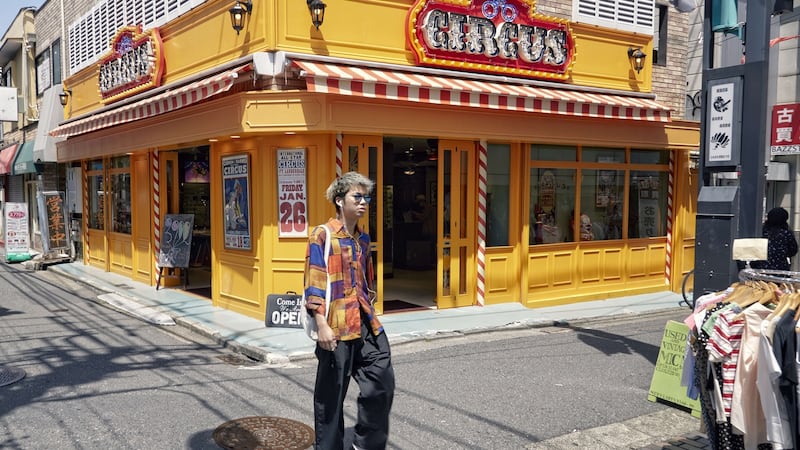When Lost In Translation was released in 2003, it became many a cinephile's dream to go and immerse themselves in the brilliant, bizarre culture of Japan. In the movie, Charlotte (Scarlett Johansson), semi-deserted by her husband, runs the full gamut of emotions as she travels the country alone, from feeling isolated and overwhelmed to gaining a sense of centredness and belonging. It was a travel destination, we figured, that offered more than most others.
Sofia Coppola's muted masterpiece had everything: the reflective quietude of the Joganji Temple, the dizzy neon splendour of Shibuya in Tokyo; politesse and alien idiosyncrasy in equal measure.
Japan isn’t the furthest I have travelled, but it’s certainly the most alien place I’ve ever been. I’d never felt such acute culture shock, the strange concoction of being totally overwhelmed and discombobulated. Yet for its frenetic terrain, I’ve rarely felt safer. In areas like Shinjuku in Tokyo, the skyscrapers are packed tightly as far as they eye can see, yet it invokes a feeling of orderliness and calm.
For many, Japan is a country best enjoyed with someone else. In cities such as Tokyo, Kyoto and Osaka, there is an OMG moment around every corner, and each of them is more fun when shared. But even in low season, there is much to enjoy for the solo traveller too.
Homework
Yet soloists need to do their homework first. Ahead of travelling, it's suggested that tourists buy a JR Rail pass, which allows visitors unlimited access to the Japan rail network, including the Shinkansen (bullet) trains, in advance. It can cost €213 for seven days, but still works out as much less expensive for visitors, and is a good investment if you decide to explore the wider country. Sites like Japan Experience (japan-experience.com) help take much of the spadework out of the process. They'll also arrange for a pocket wifi device to be couriered to your hotel or Airbnb on your first day in the country, which will prove utterly invaluable. A Pasmo card, much like a Leap card, is another sound investment and takes much of the headache out of navigating Tokyo's labyrinthine subway system. Also, Tokyo streets don't have names. Addresses indicate ward, district within it, plus 3 numbers for sub-district, sub-section of that, and building number. This is why wifi will be your very best friend.
The neon-drenched Shinjuku and Shibuya are two of the busiest neighbourhoods in Tokyo
The first port of call for any fan of Lost In Translation is, of course, the dark and stylish bar where Charlotte first meets Bob Harris (Bill Murray). It's the New York bar, housed on the 41st floor of the Park Hyatt Hotel (Nishishinjuku, 3-7-1-2), where much of the film's interiors were shot. The atmosphere is romantic if muted, abetted by a slightly snooty staff who have doubtless had their fill of movie fans. Still, it's far from a tourist trap. Instead of groups taking selfies, as I'd expected, the older and well-suited clientele smoke inside and feign ennui at the dazzling Tokyo skyline.
Sunset
The experience doesn’t come cheap. A 2,200 yen (€15) cover charge begins at 8pm (7pm on Sundays) when a jazz band begins to play. If you’re like us and want to eliminate this expense, come around 5pm instead and enjoy the sunset. Still, at Twilight Time (5-8pm), a 4,000-yen (€31) admission buys free-flowing drinks and buffet-style canapés.
The neon-drenched Shinjuku and Shibuya are two of the busiest neighbourhoods in Tokyo. The latter's famous crossing, featured memorably in a spacey scene in Lost In Translation, is certainly worth a look (maybe adjust your expectations. In 2018, it's not as big a shake to the senses as you might think). The scene, incidentally, was shot from the second floor of the nearby Starbucks of the Q-Front Building (Udagawacho, 21-6). The crew didn't have far to travel to film those karaoke scenes, either: Bob and Charlotte sang Roxy Music and The Pretenders in the Shibuya branch of the Karaoke-Kan chain (30-8 Utawagacho).

Shibuya is home to retails giants such as Gap (1 Chome-14-27, Jigumae), Tower Records (1 Chome-22-14, Jinnan) and Uniqlo (2-29-5 Dogenzaka), but the local retailers hold their own. On Cat Street, you'll find Tokyo-based brand Ambush (1 Chome-22-8), while ABC Mart is a mecca for cut-priced brands. Laila Tokio's splendid shop is worth checking out if only for its décor, featuring 8,000 tiny pyramids. The department stores or depatos – among them Tokyu Hands, Keio, Seibu and Daimaru – are destinations in their own right. Some of the best food in Japan is served in the underground food halls of these department stores in areas known as depachika. Ikebukoru Tobua (1 Chome-1-25, Nishiikebukuro) is one of Japan's largest and home to the Croquant Chou Zaku Zaku, famed for its almond cream pastries. Elsewhere, the Takashimaya Shinjuku (Sendagaya, Shibuya) boasts the White Garden, a spacious and calming outdoor terrace that overlooks downtown Tokyo.
Culinary spectrum
At the other end of the culinary spectrum, Shinjuku’s Omoide Yococho (or “Piss Alley” to locals) is a throwback to the Showa era, and replete with cheap eats and drinks. It comes alive in the evenings as local office workers flock to the maze of tiny bars, yakitori grills and food stalls. Here, being a solo traveller is a bonus, as often there are only single seats available at many counters. The nickname of the area, which started as an illegal drinking quarter in the 1940s, stuck after patrons wandered off to relieve themselves on nearby train tracks, owing to lack of facilities. Things are, mercifully, much more sanitary these days.

The Robot Restaurant (1-7-1, Kabukicho), holds a campy, near-hallucinogenic dinner show featuring dancers, effects and robots. Purists dismiss it as a cheesy tourist cliche, and the dinner element of the show leaves much to be desired, but as spectacles go, the best thing to do is sit back and bask in the fun (it’s also a good place for solo travellers to meet others). Tickets are around 8,000 yen (€63) but booking online and in advance will yield sizeable discounts.
Harajuku has lost ground as one of Tokyo's coolest neighbourhoods, and now you're more likely to find the action in Shimokitazawa
Thanks in part to a brush with the pop mainstream, the neighbourhood of Harajuku, which is within walking distance of Shibuya, is no longer the pulsating style menagerie it was a decade ago. Yet Takeshita Street is often throbbing on the weekends with Tokyo's young and stylish denizens. Catering to a younger shopper, Harajuku is the place to pick up pocket-friendly Korean skincare brands. Etude House (150-0001 Takeshita) is a mix between Sephora and Lush, and while it can get frantic with young local shoppers, the products themselves are a dream. Cat Café Mocha (32-12 Udagawacho), Harajuku's cat cafe, offers patrons the chance to meet and pet cats for 200 yen (€1.50) for every 10 minutes. Here, cats laze in birdcage features and in the branches of a wooden tree sculpture. More adventurous animal lovers, meanwhile can enjoy the company of owls at the Owl Café (1-21-15 Jingumae).
Oasis of serenity
If petting wildlife isn’t calming enough, an oasis of serenity is just nearby. The Meiji Jingu shrine (1-1 Yoyogi Kamizonocho) is dedicated to the deified spirits of Emperor Meiji, the 19th-century figure who effectively opened Japan to the West. It’s not as aesthetically impressive or flashy as other shrines and temples, but it’s the perfect moment to doff a cap to tradition, write a wish on a piece of paper and tie it to the prayer wall. If you’re lucky, you might also see traditional wedding processions there, including brides in white kimonos.

Harajuku has lost ground as one of Tokyo’s coolest neighbourhoods, and now you’re more likely to find the action in Shimokitazawa, five minutes on the overground train from Shibuya. It’s more intimate and less hectic than the more metropolitan areas of Tokyo, yet throbbing with its own energy. Shoppers will find much to like in this tangle of record shops, cafes, vintage clothes stalls (such as Ragla Magla, at 2 Chome-30-10 Kitazawa) and handmade gift stores.
Shimokitazawa Cage (2-6-2 Kitazawa, Setagaya 155-0031) is a safe bet for night markets, art exhibitions and food stalls. Mother’s Ruin (NF Building, Setagaya 155-0031), with its authentic cuisine and welcoming vibe, is one of the oldest rock bars in the area, while the Bear Pond Café (Tokyo Prefecture, Setagaya 155-0031) is popular but perhaps excessively hip, with a strict no-photo policy.
Another trendy area, far from the careworn tourist path, is South-Central Nakameguro. It's a beguiling marriage of retro and up-to-the-minute contemporary; new restaurants and boutiques hug the Meguro River. Shu (4-9-2 Kamimeguro), specialises in authentic Louisiana gumbo, while the hidden lunch spot of Aoya (Aobadai 1-15-10) is marked only by a paper lantern in front of a pebble-dashed walkway. There are a number of these "speakeasy" establishments around, but still Nakameguro is evidently a neighbourhood that's changing rapidly, so be sure to visit it in its current splendid iteration while you still can.
Trailfinders offer flights to Japan with Cathay Pacific (via Hong Kong). December flights can cost around €700-€800. They also offer a self-guided trip to Tokyo, Osaka, Kyoto, Mount Fuji and Hiroshima, with accommodation, JR Rail pass and attraction tickets, from €2,535 per person). See trailfinders.ie or call 01-677 7888 for more information.










